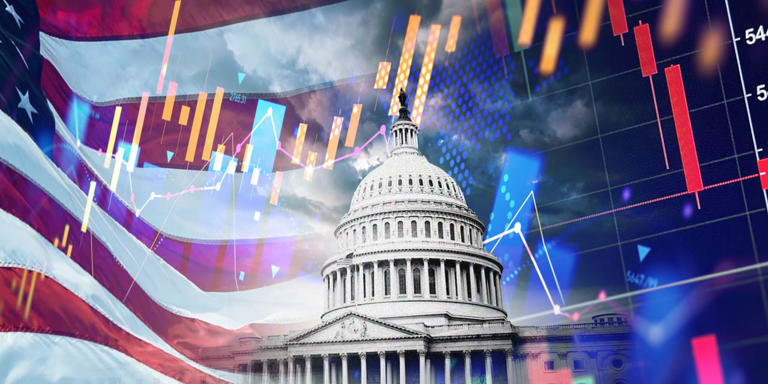Wall Street’s enduring fixation with the yield curve inversion between the 2-year and 10-year Treasury rates reflects deeper anxieties about economic health and political stability. This inversion, where longer-term yields fall below shorter-term ones, historically foreshadows economic recessions. The signal first turned negative in July 2022, setting off alarms and initiating a countdown to a potential economic downturn.
Despite the prolonged inversion, the U.S. economy has managed to defy expectations of recession, prompting a shift in how investors interpret the yield curve’s message. Beyond its traditional role as an economic indicator, the 2s/10s yield curve has evolved into a barometer for gauging political outcomes, particularly ahead of the upcoming November presidential election.
Dubbed the “Trump trade” by some bond market analysts, fluctuations in the 10-year Treasury yield have been closely tied to market reactions following significant political events, such as President Joe Biden’s perceived lackluster performance in a June 27 debate. The 10-year yield spiked approximately 20 basis points to nearly 4.5% amid speculation that Biden might withdraw from the race, fueling expectations of a victory for former President Donald Trump. Such outcomes are seen as potentially supportive of policies like tariffs on imports and stringent immigration reforms, which could stoke inflationary pressures and sustain upward momentum on long-term interest rates.
Market analysts, including Jim Robinson of Robinson Capital Management, anticipate a steepening yield curve in response to expected rate cuts by the Federal Reserve, which are anticipated to commence in September irrespective of electoral outcomes. Robinson cautions, however, that a Trump victory and subsequent policy implementations could lead to stagflation—a scenario combining stagnant economic growth with persistent inflation. This could, in turn, exert upward pressure on longer-term interest rates, complicating the economic landscape further.
The interplay of political events and economic data continues to shape perceptions of the 2s/10s yield curve. Bond strategist Guy LeBas notes that political factors notably influence the curve’s trajectory, although the outcome remains uncertain given the multifaceted nature of political campaigns and economic policy shifts.
Despite recent adjustments, including a decline in the 10-year yield following positive inflation data, the yield curve remains inverted by approximately minus 33 basis points as of the latest reports, indicating lingering caution among investors.
Looking forward, concerns persist over the fiscal management strategies of both presidential candidates, with apprehensions about escalating government spending and burgeoning deficits. The Treasury market, facing significant refinancing requirements amid a substantial $27 trillion debt load, remains a focal point for investors navigating the complexities of economic uncertainties and political dynamics.
In summary, while the yield curve’s traditional predictive power regarding recessions may appear nuanced in the current economic climate, its role as a vital indicator of market sentiment and political expectations remains pivotal. As the U.S. approaches a pivotal presidential election, the yield curve’s movements will likely continue to provide insights into evolving economic conditions and investor sentiment.
